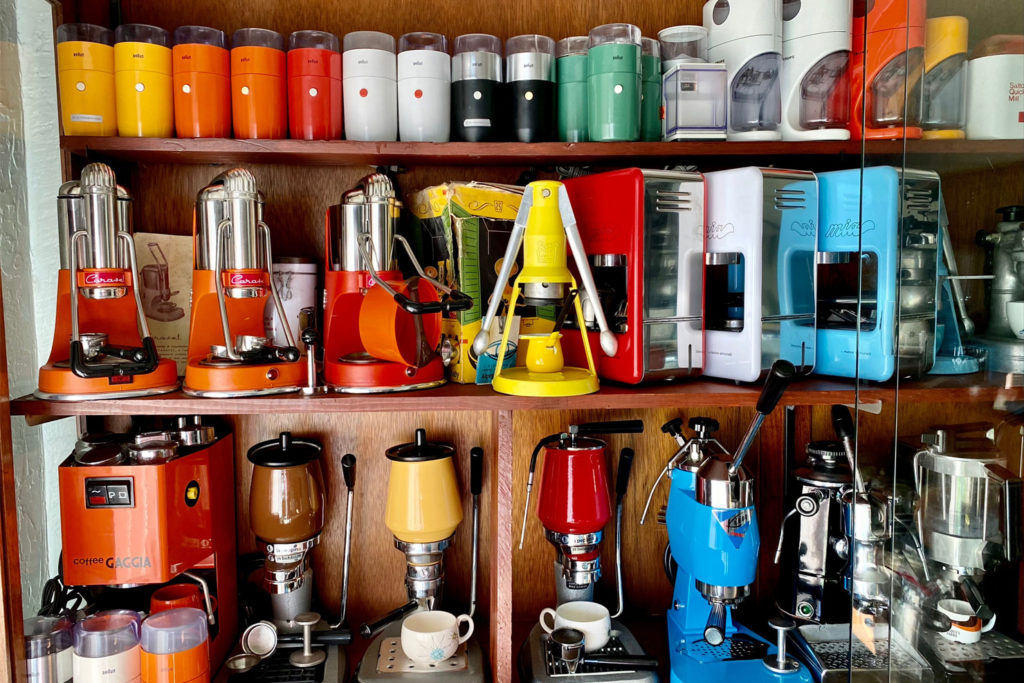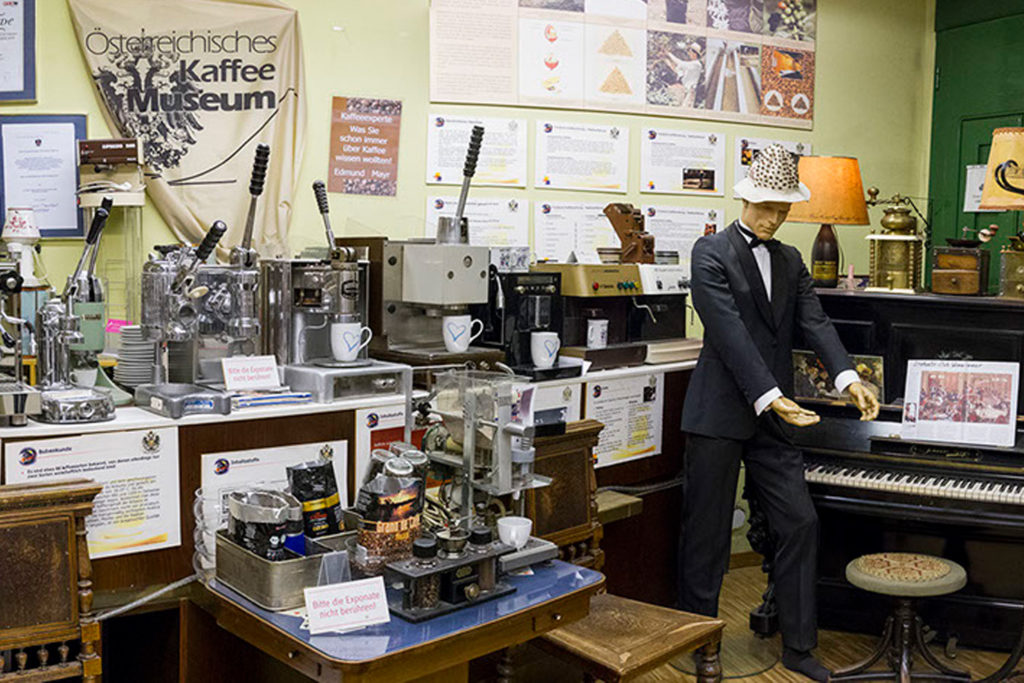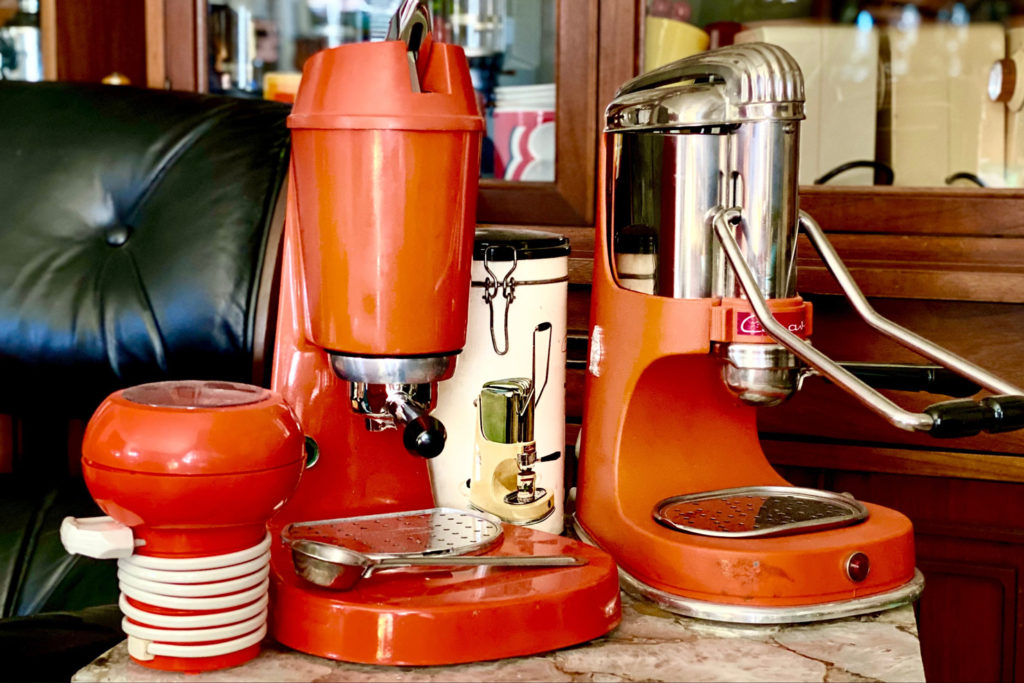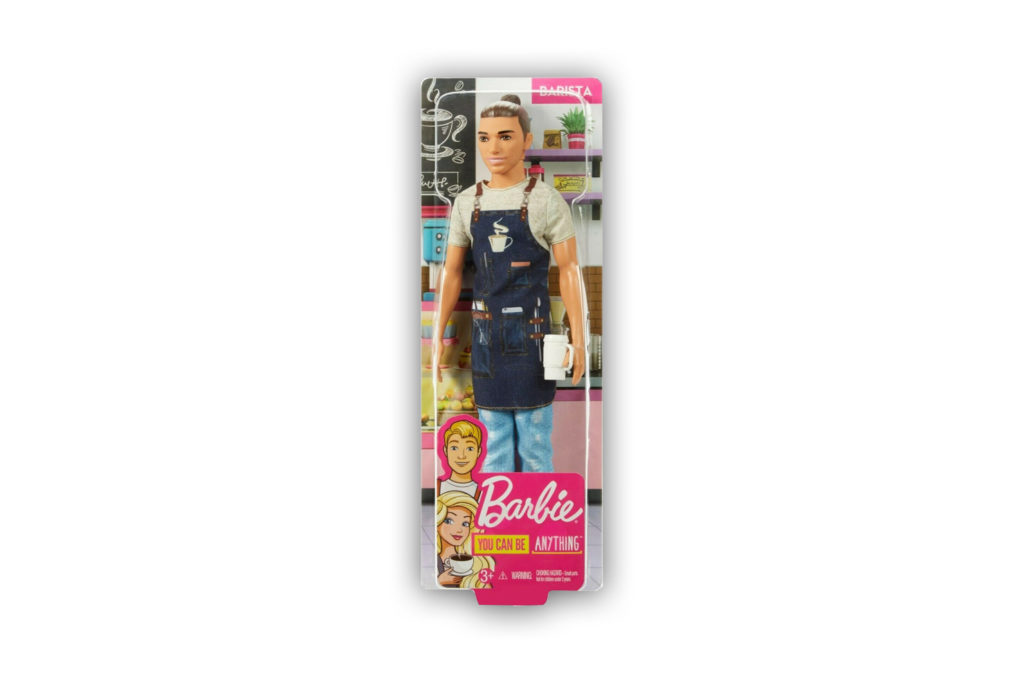I was interviewed by Jenn Chen on Sprudge about my coffee story, and the article was published yesterday. I’m reproducing it here for your reading pleasure.

“I remember a big scandal because McDonald’s was serving coffee with a little bitty teaspoon for your sugar and people were using it for drugs.”
I’m speaking with antique expert Terry Kovel, whose story about the ill-fated McDonald’s teaspoon has become the stuff of legend. Though the spoon had a short production lifespan in the 1970s, collectors like Kovel knew it might be wise to save some for the future collector’s market. She says, “I thought that was pretty funny that people were so smart.”
When I think of antiques, I think of TV shows whose hosts astound furniture owners with a high valuation and sleepy stores piled up high with knick-knacks. I don’t think of the tins I have on my shelves or the wooden hand grinder I found—both sourced because I thought they’d look great as decor (they do). But I should know by now that coffee has a dedicated fanbase in practically every specialized interest out there.
The most commonly collected antique coffee items include mills/grinders, advertising, tins/cans, and espresso machines. Less common but still collectible (because one could collect anything) are mugs, cream and sugar sets, sugar packets, defunct inventions, specific brand coffeemakers like Chemex, photos, and books.
Coffee mills alone boast their own Association of Coffee Mill Enthusiasts, multiple books, and many articles. They have dedicated collector sites and a historical guide on Kovels. Kovels Antiques, co-founded by wife Terry and late-husband Ralph Kovel, is widely recognized as an authority on antiques.
I was able to chat with Terry Kovel about her first interactions with coffee and subsequently, coffee antiques. In the 1950s, she encountered coffee at the A&P grocery store across from her house. At that time, coffee grinders were large, iron, mechanical behemoths that rested on the floor. She described the A&P one as a “great big coffee grinder in one corner and they had bags of coffee beans, and you had to be smart enough to know how to work all this.” There were no other choices for coffee because “they didn’t carry ground coffee. Nobody carried it at that point.”
The next significant coffee experience was her first sip of coffee, done when she was in labor with her first child. “I started to cry. I was really upset when I got to the hospital. I said to the doctor, ‘I don’t know why I’m crying,’” she recalls. “He says, ‘I do. You’re under a lot of stress, drink more coffee.’ So that’s when I first drank it.”
Her current collections span anywhere from sugar packets to wall grinders but the one that bears a special mention is the counter grinder, which is dated to between the 1850s-1880s. Half of her house’s basement is a pseudo-country store replica where the Kovels filmed their antique TV shows and the grinder completes the look. “They’re wanted for just the reason I bought it because they look great in that setting,” she says. “If you want to suggest that you love coffee, buy a big coffee grinder.”
While the Kovels collected nearly anything and everything, others narrowed their collection interests down to coffee items. Born out of a 50+ years-long interest in coffee items, the Viennese Coffee Museum in Austria covers every part of the coffee process in its exhibits and features an operating rendition of a Viennese coffee house. In 2011, UNESCO designated Viennese coffee culture as an intangible cultural heritage.

Museum curator Karl Schilling says that due to their “quasi-mechanical” nature, most of their machines are still functional. “For visitors, we will show coffee preparation including milk froths on an E61, model ‘Ariete’ and, to show the fully automatic side of the spectrum, on a Schaerer Matic.” One of his favorite pieces in the museum is the balancing syphon. A completely automated coffeemaker from the mid-19th century, Schilling says, “it had offered a great field of activity to doctors, mathematicians, pharmacists, coffee proprietors, as well as glassmakers, silver, and goldsmiths.”
For Schilling, his fascination with coffee antiques stems from both a desire to preserve Viennese coffee culture and the uncomplicated nature of older machines. “For me, it’s not the technical features that are in the foreground, but the simplicity of the preparation method and the brilliancy alike,” he says. “And of course the design. You can get into raptures about that.”
Cher Grosse, owner and roaster of Sacramento, CA-based Soulside Coffee agrees. “When I found my first lever machine, it was hook, line, and sinker. I really just loved the thing and I love the simplicity of it,” she says. “I loved the control I had over the shot and it was such a game-changer for me that I really started to rein in my focus.” Grosse has been collecting antique coffee items for over 25 years and at a count of several hundred, believes she has the largest woman-owned collection of vintage espresso machines in the world.

Half of her collection is new old stock, which for her, is never-been-used machines from the 1960s or earlier. The one that put her on the map as a serious collector was a two-group Faema Urania. The machine had been resting in a couple’s basement since they received it as a wedding gift in 1958, tucked away unopened. “It included the original Faema wrench and the original Faema brown paper bags,” she recalls. “It had everything like every single nut, bolt, everything with it. And that was in 2012. It was like a fever after that.”
Another collection favorite is her set of Nuova Simonelli “Mia” machines. Introduced in 1982, the Mia had a short run of red, white, and blue color variants. “I ended up eventually collecting all three of them, but it took 15 years to get them,” says Grosse. “It’s just a trip and absolutely nobody has that.”
Grosse’s enthusiasm and passion for lever machines shine through the phone lines. She’s currently looking to house her extensive collection in its own museum and rent some out as props in historical movies. “It’s a slice of an era and I think they need to be appreciated and respected,” she says.
Part-owner and coffee buyer at Oakland, CA-based Sweet Maria’s Thompson Owen has a different take on antique collecting. He’s been collecting home roasters, books, and printed materials for over 20 years. “I mostly am interested in how coffee consumption has changed as a cultural practice over time, since that can shed some light on its current meanings,” he says.
As an example, he names some photos of a coffee harvest in Sumatra, explaining, “It wasn’t like farmers were necessarily self-motivated to plant, or that they would really reap the rewards of their work. They were required to plant coffee.” Looking only at the photos, one doesn’t quite grasp the historical context, “but by understanding the fairly brutal practices of the Dutch East Indies company, the images gain a fuller meaning.”
If there is one thing I’ve learned from working on this piece, it’s that anyone can collect anything. You might run the risk of having a cavern filled with “whosits and whatnots galore” like Disney’s Ariel, but a part of the collecting appeal rests internally.
While the people I interviewed did cite preserving history as one reason for their collections, they also gave reasons about how certain item types resonated with them on an emotional level. This is all to say, thank you to Grosse for trying to hook me into finding a vintage teal lever machine, Schilling for giving me a museum to visit the next time I’m in Vienna, and Owen for tipping me off on the existence of a Barbie Ken Barista Doll.

Jenn Chen (@thejennchen) is an Editor At Large at Sprudge Media Network. Read more Jenn Chen on Sprudge.